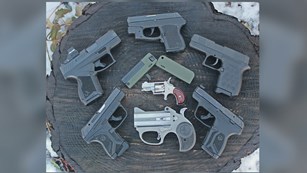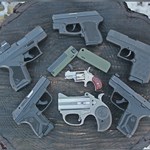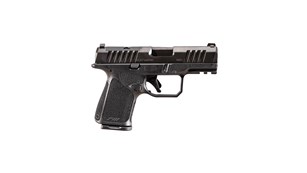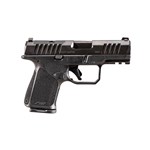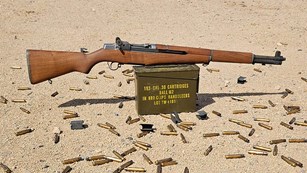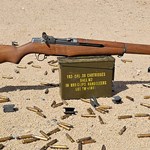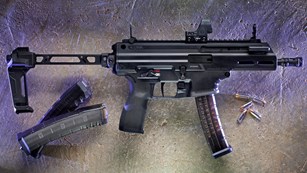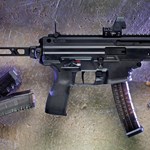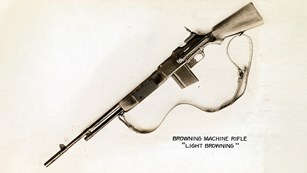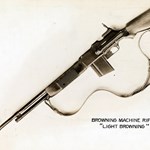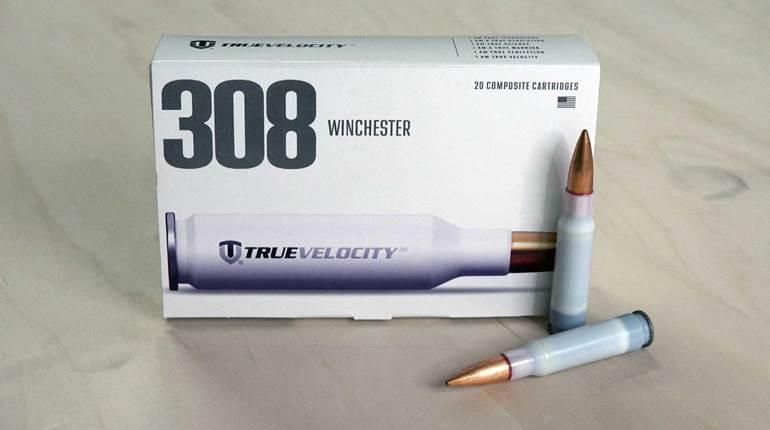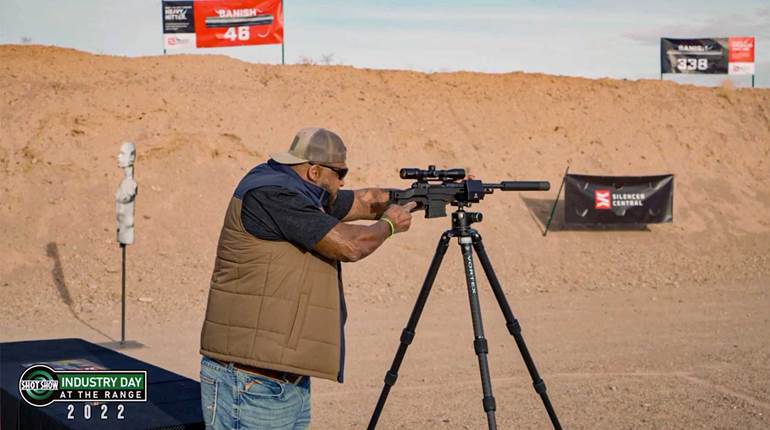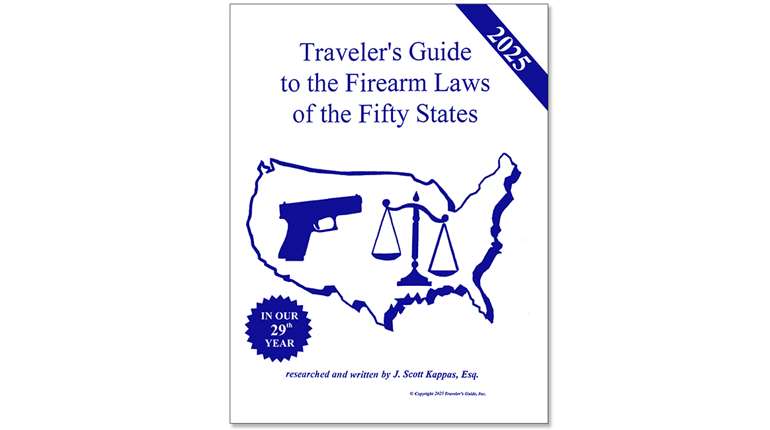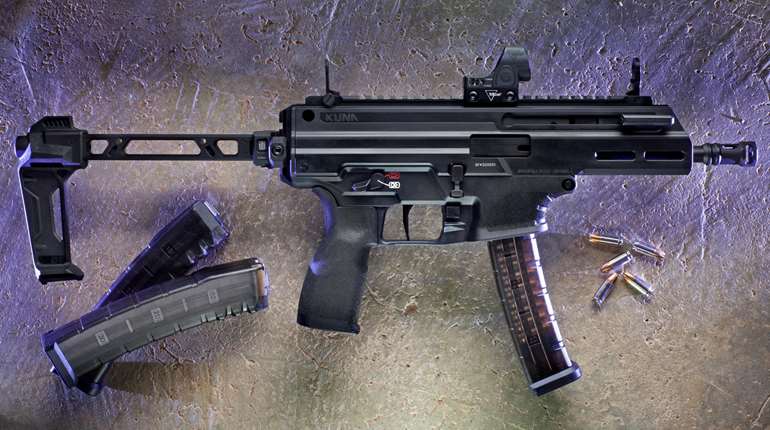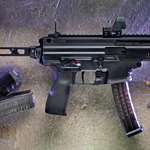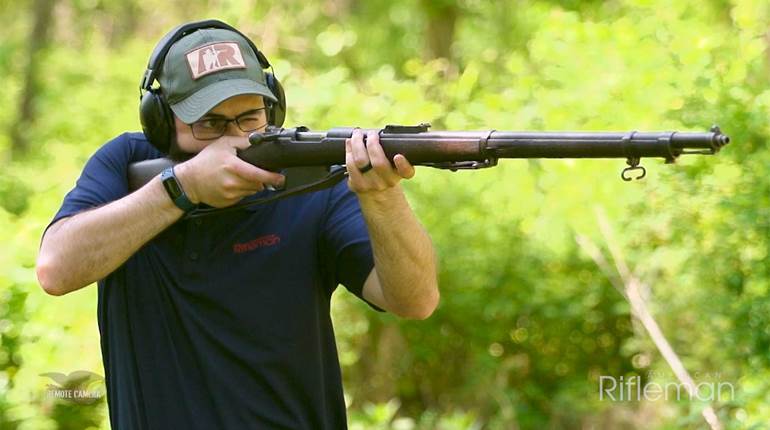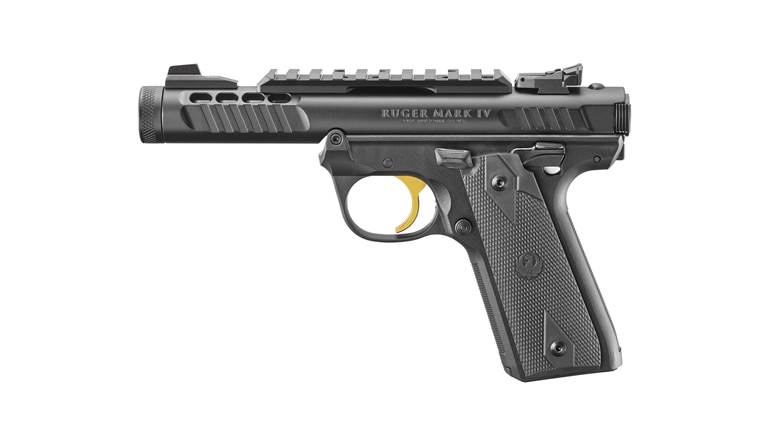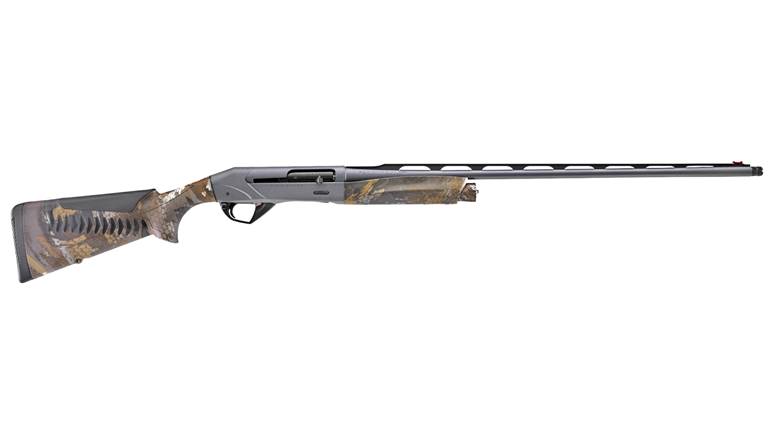
Undoubtedly, the coolest gun I saw at the NRA Annual Meetings & Exhibits in Pittsburgh was a half-scale, mechanical marvel, beautifully rendered in polished brass and sitting on a table Navy Arms/U.S. Armament booth. Gleaming under the florescent lighting of the show hall was a newly manufactured two-barreled Gardner Gun chambered in .22 Win. Mag.
American lawyer William Gardner invented a mechanical machine gun that he offered to the U.S. military as early as 1879 without success. Despite an impressive performance at the Washington Naval Yard in which 10,000 rounds were fired in under a half an hour, no orders were forthcoming. But the British knew a good thing when they saw it, and in 1881 adopted the gravity-fed Garner for both land and Naval use. Like the Gatling, the Gardner was manually operated by a crank but instead of rotating barrels, it had fixed barrels—usually two but sometimes five—with in-line reciprocating breechblocks that somewhat resemble the toggle of a Luger bolt on a flywheel.
I was fortunate enough to shoot U.S. Armament’s .45-70 Gardner and Model 1877 “Bulldog” Gatling guns this spring for “American Rifleman Television” (be sure to tune in Wednesday, July 6) as well as learn how the company makes its Gardners and Gatling from polished brass and blued steel. Call it heresy, but on the range I enjoyed the meaty cadence of the two-barreled Gardner more than theGatling.
The .22 Mag. “mini-me Gardner” was a pleasant surprise, and as it is in the prototype phase at this point, pricing hasn’t been determined. Obviously, it will be less than the $36,500 the company gets for its Gatling, but when you see how the latter is built, you’ll understand it is worth every penny.
And, yes, I asked for the first gun to review for “Dope Bag: Data & Comment” and am already stockpiling .22 Mag.
